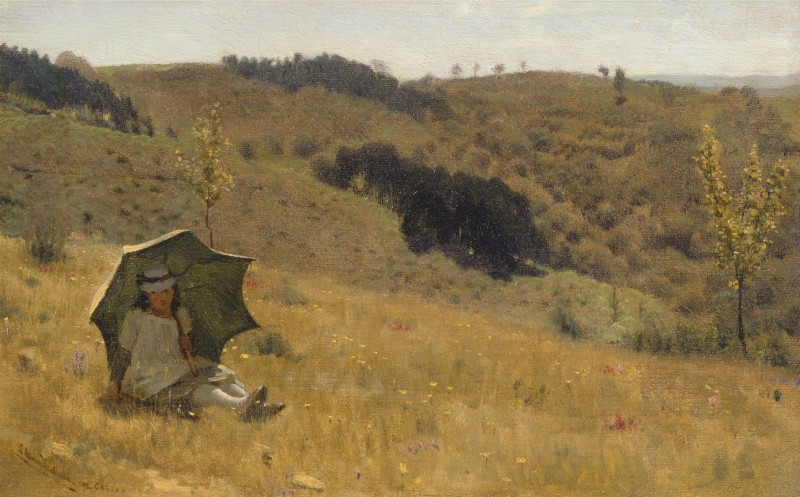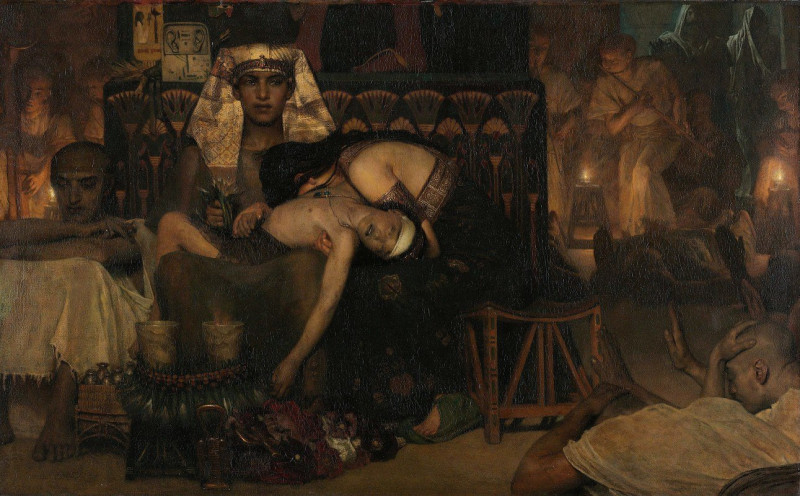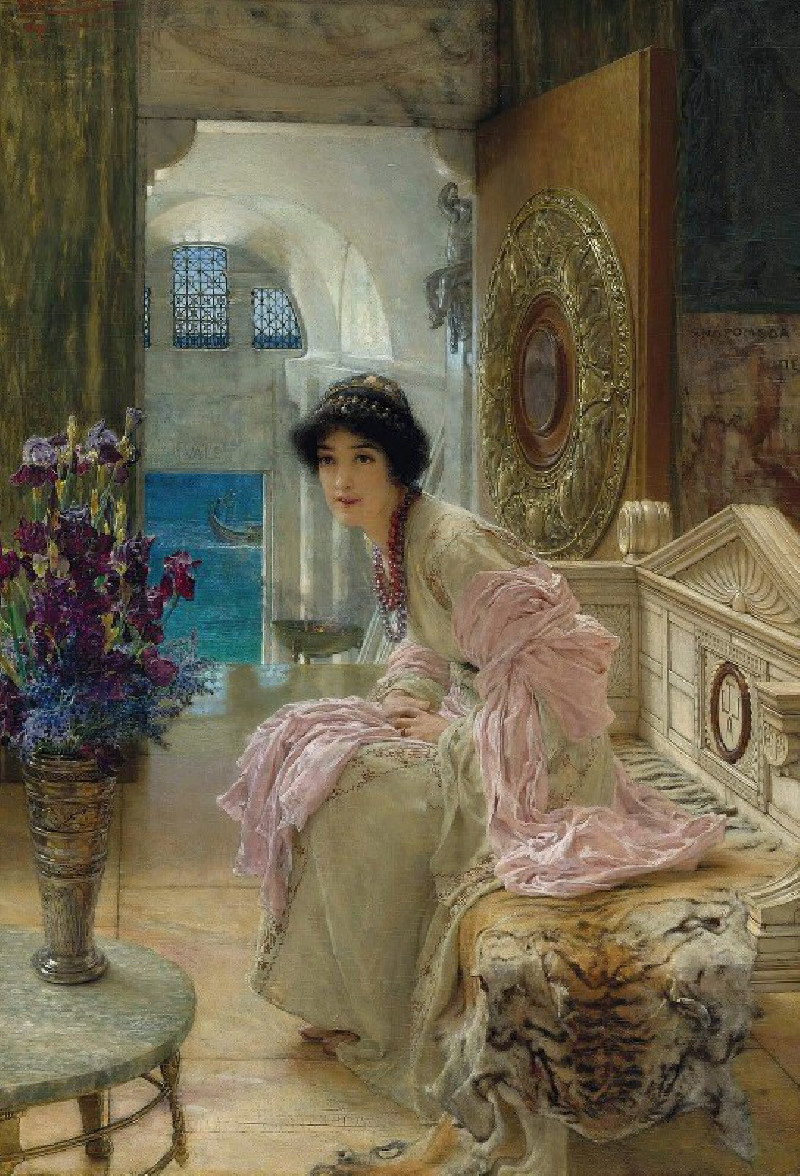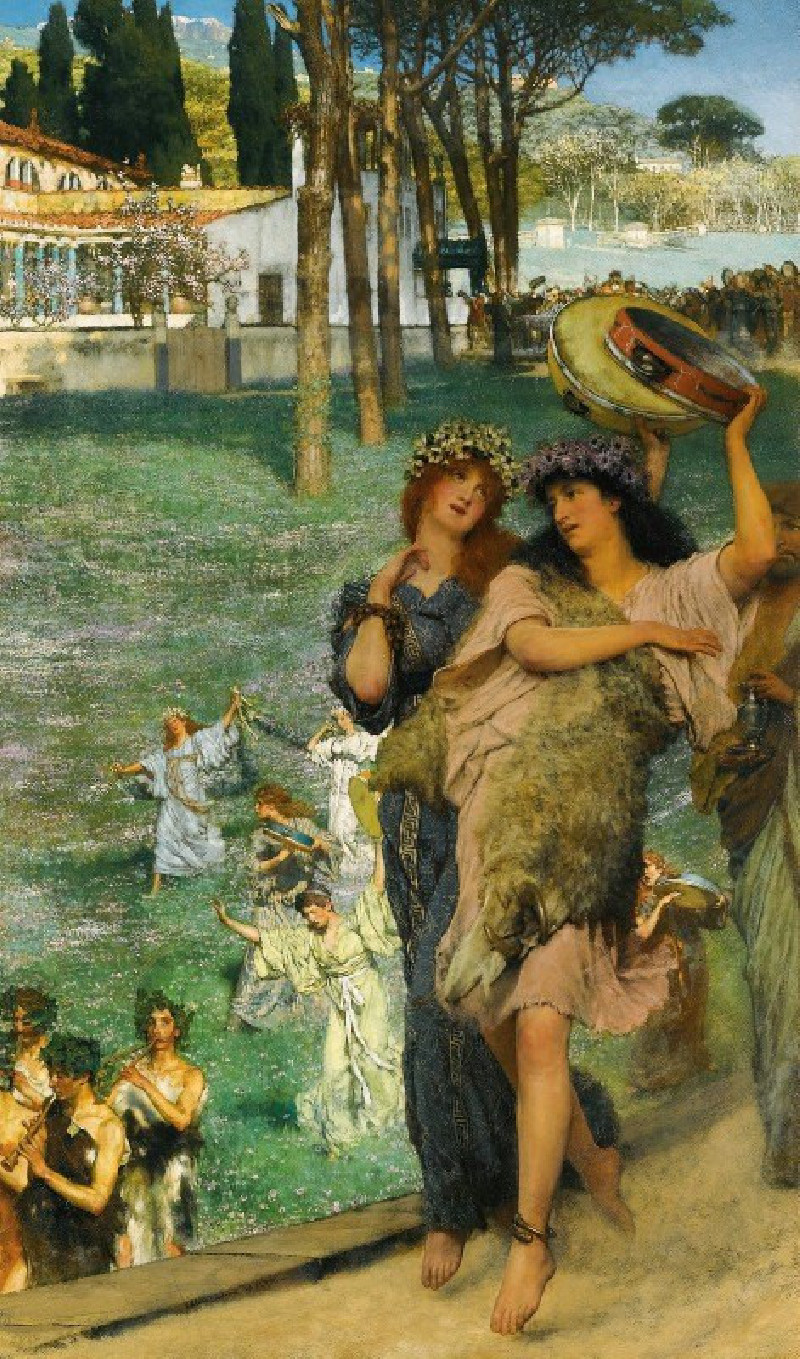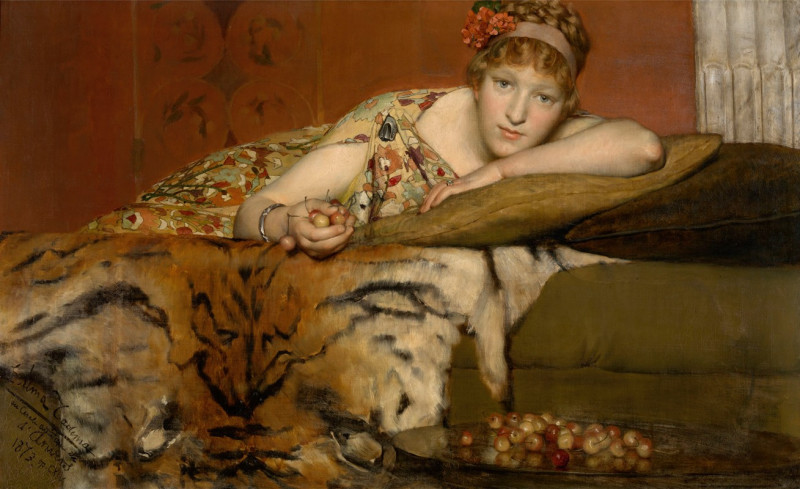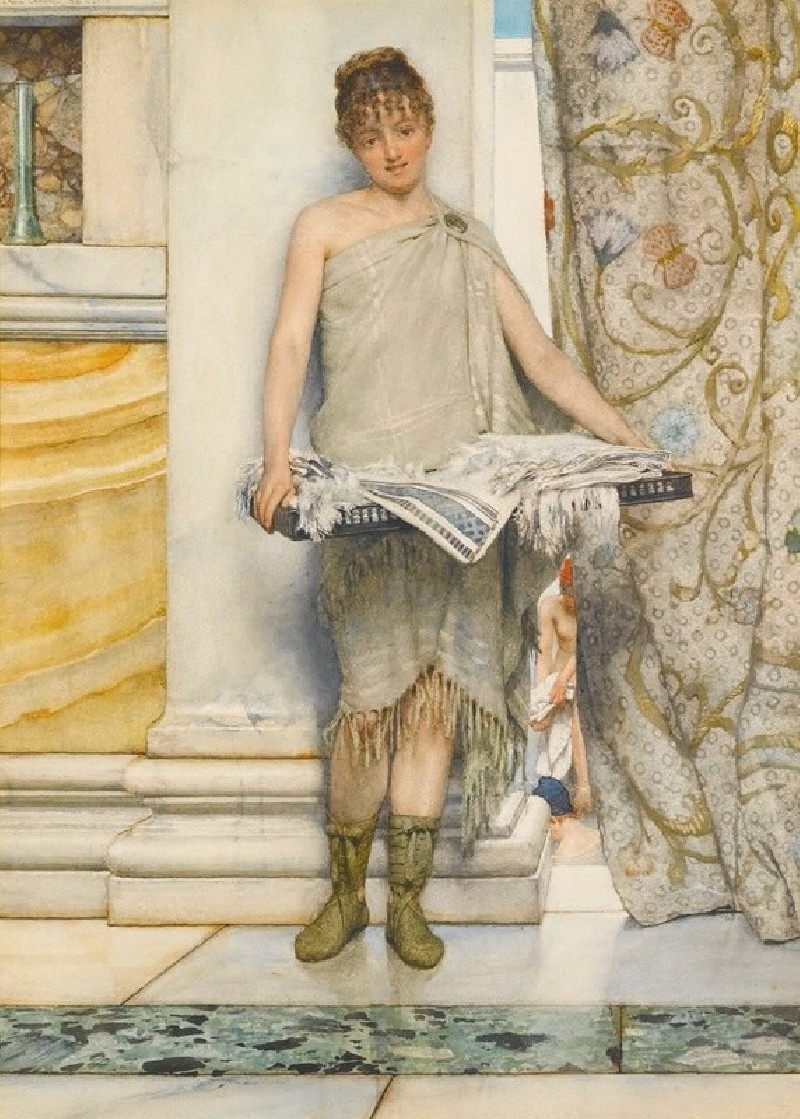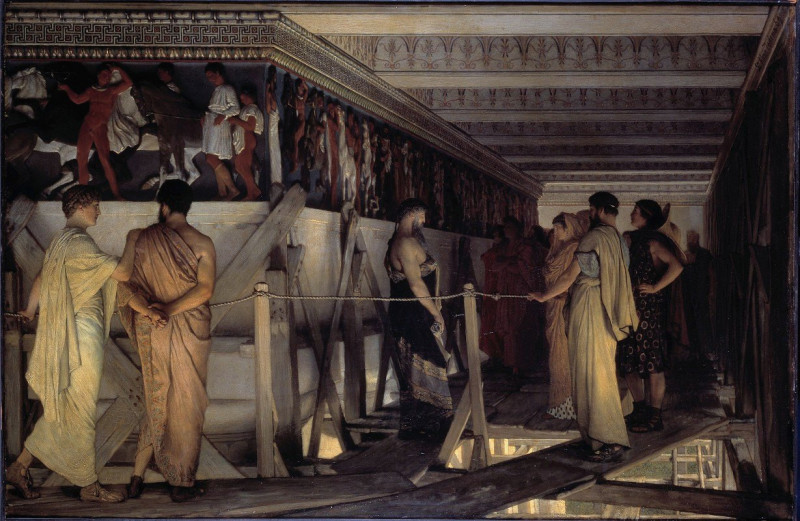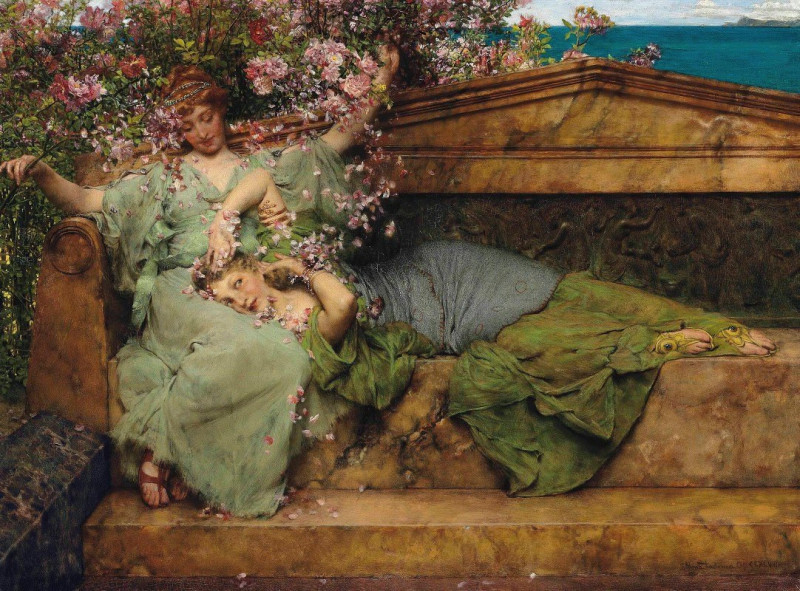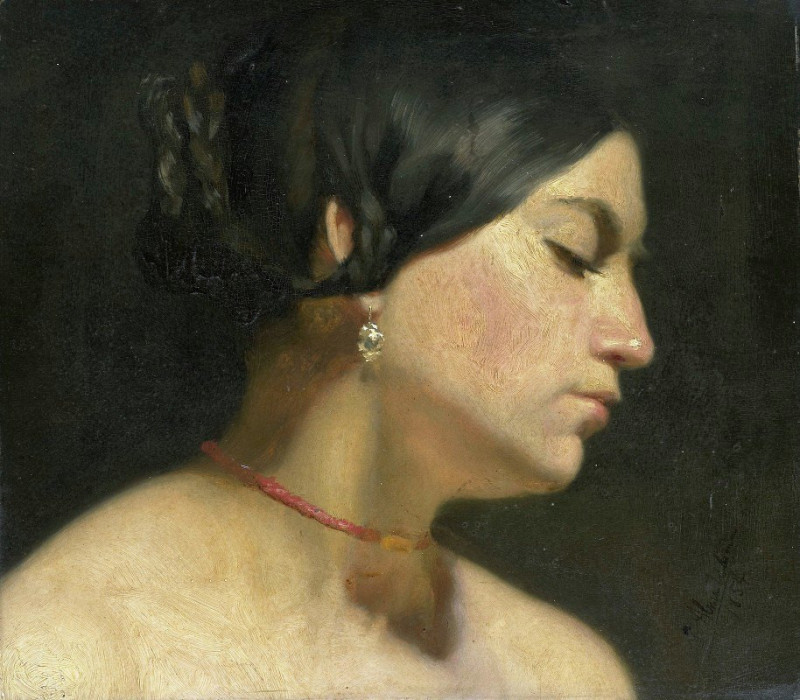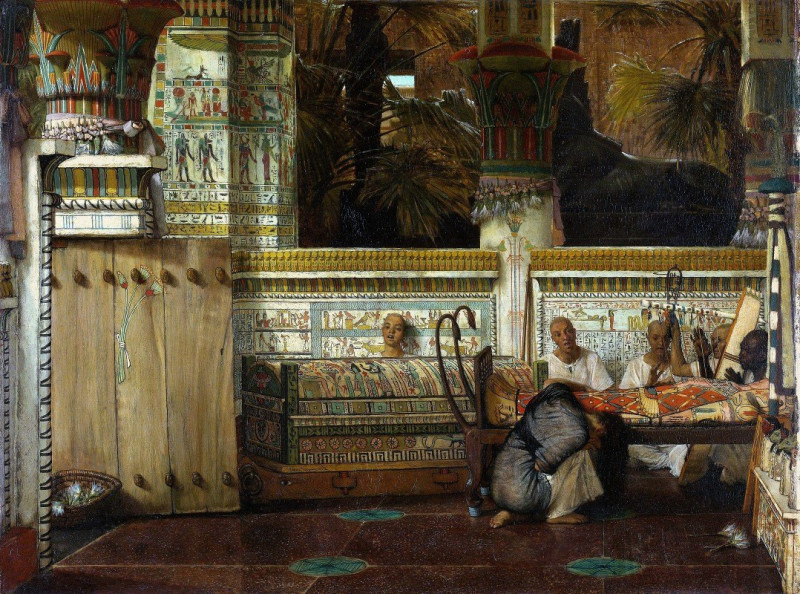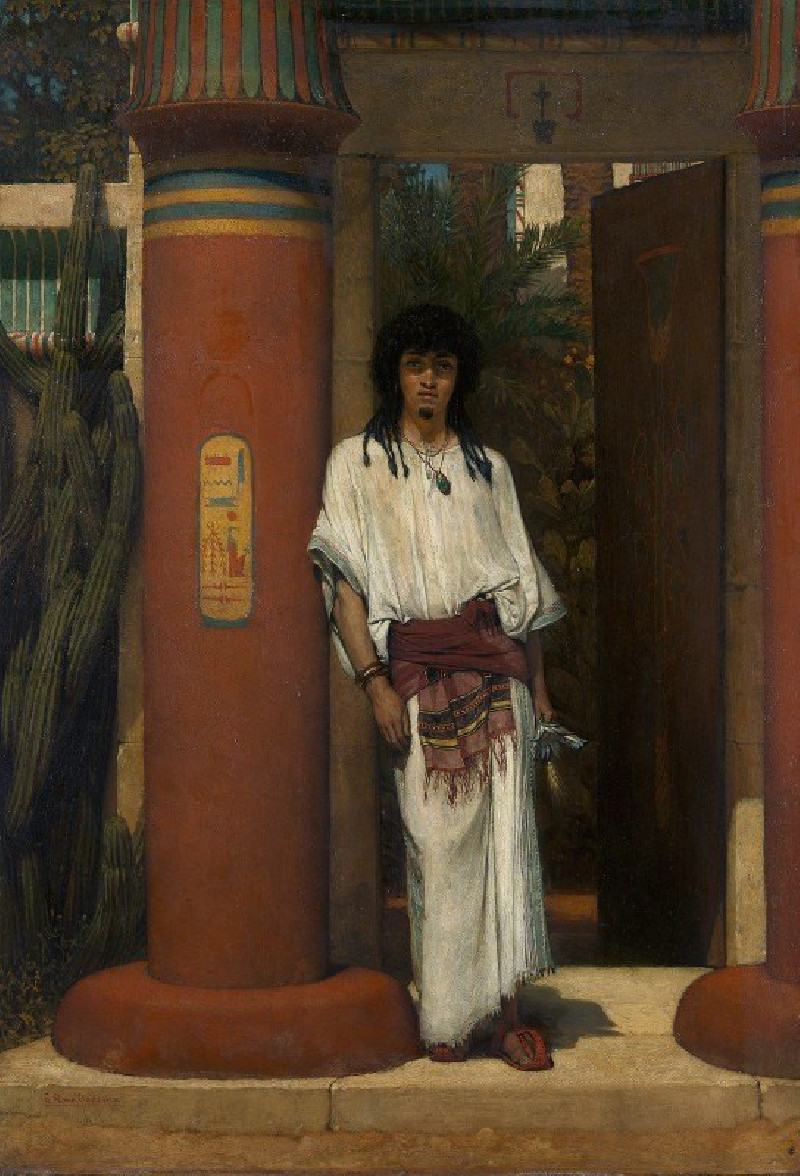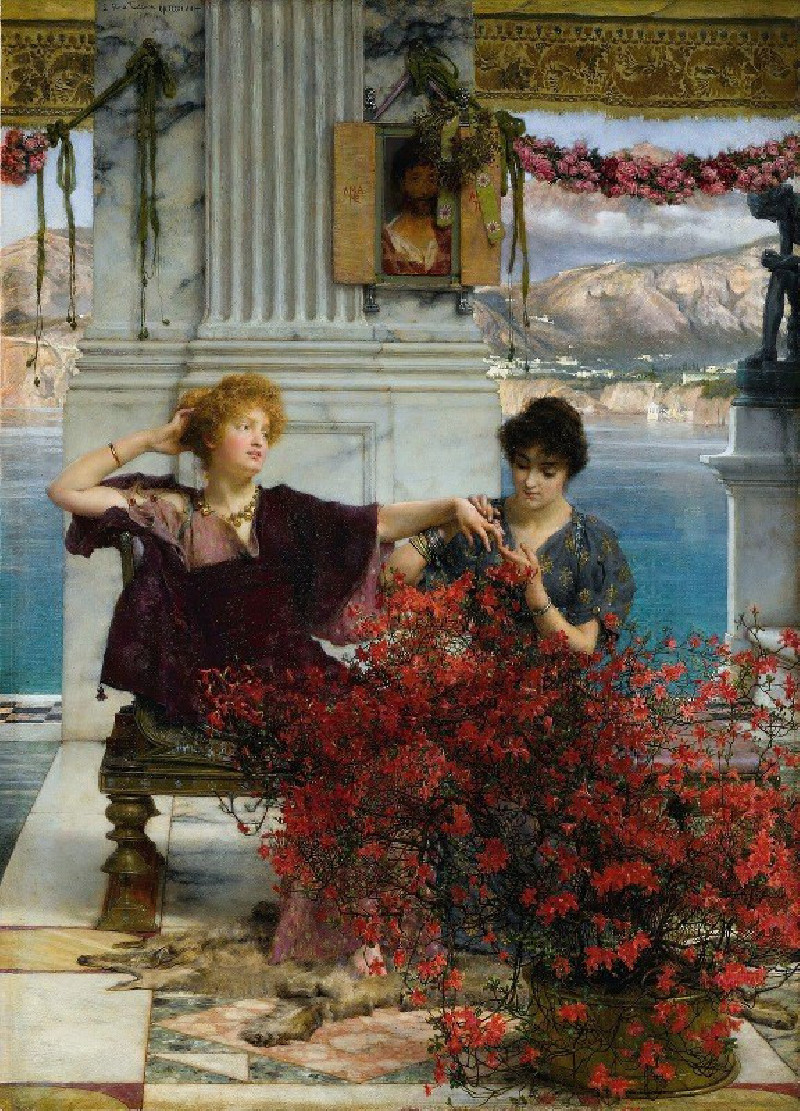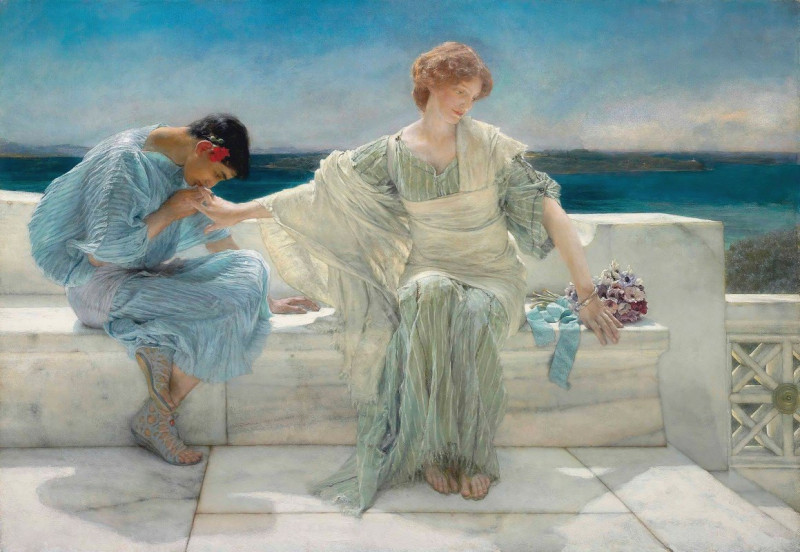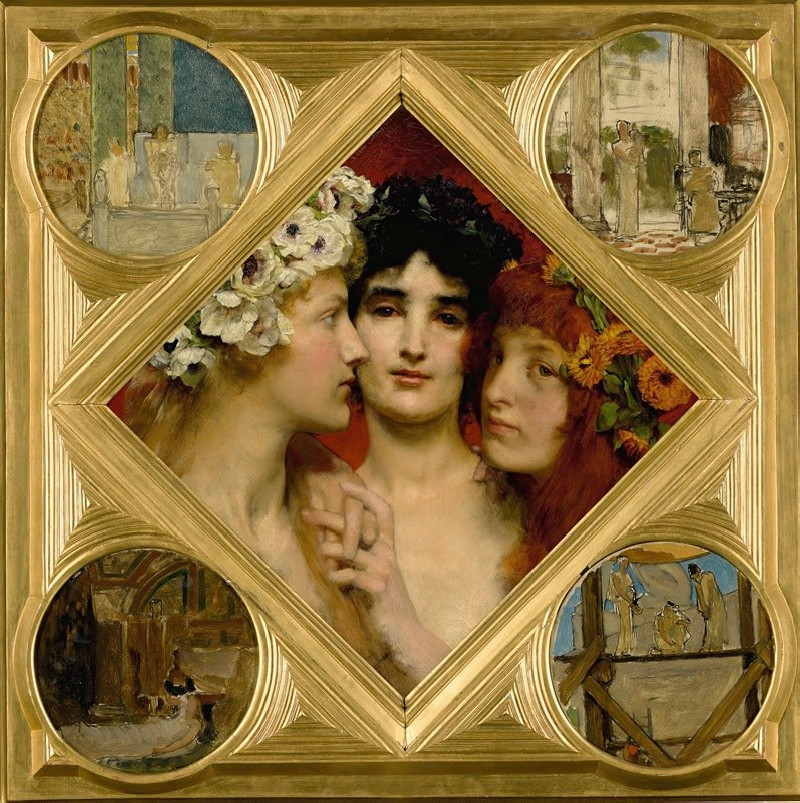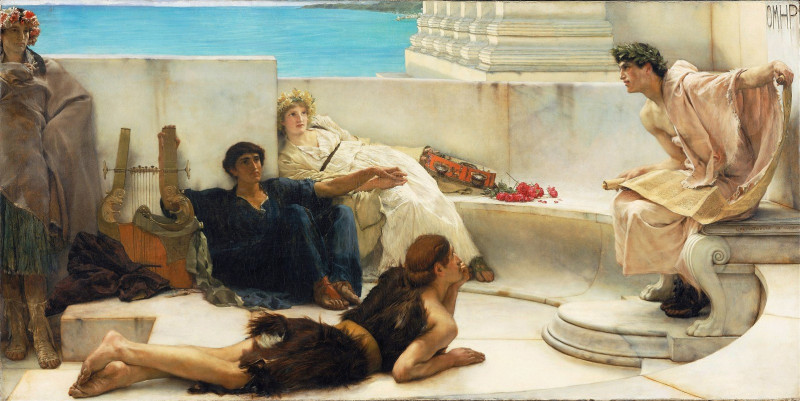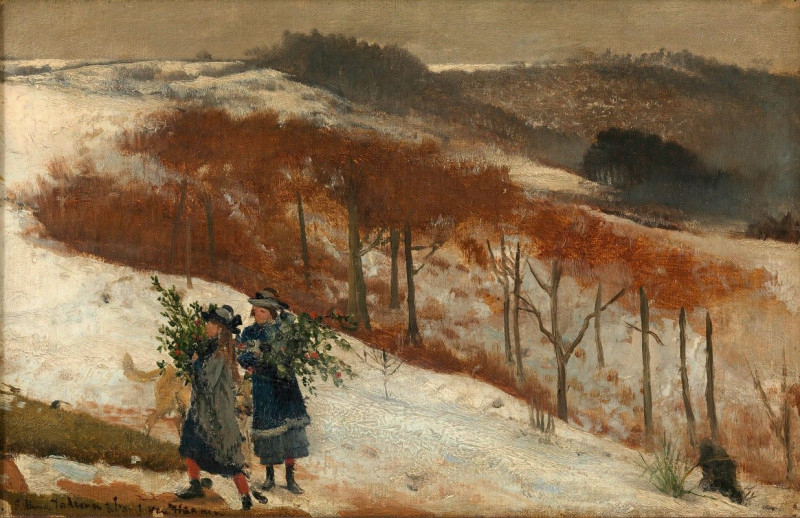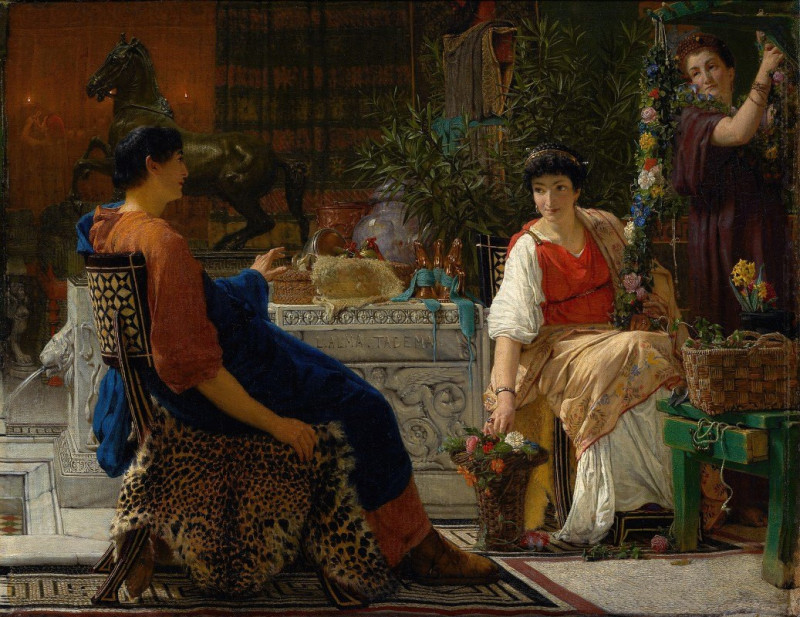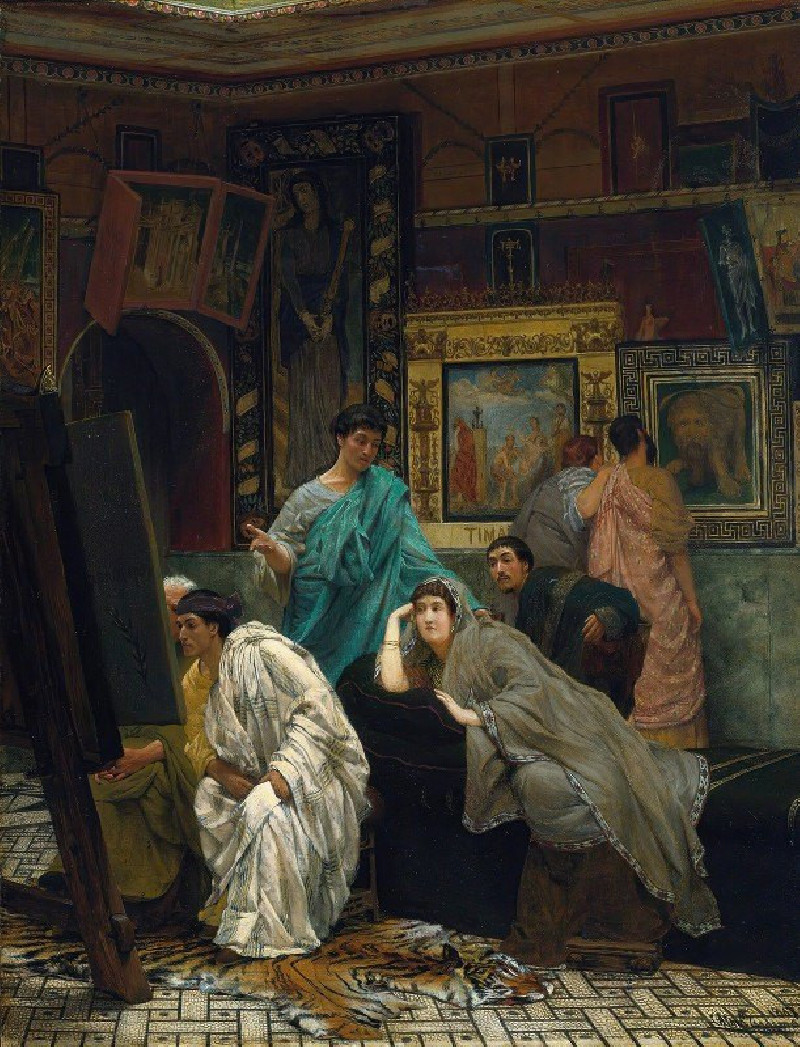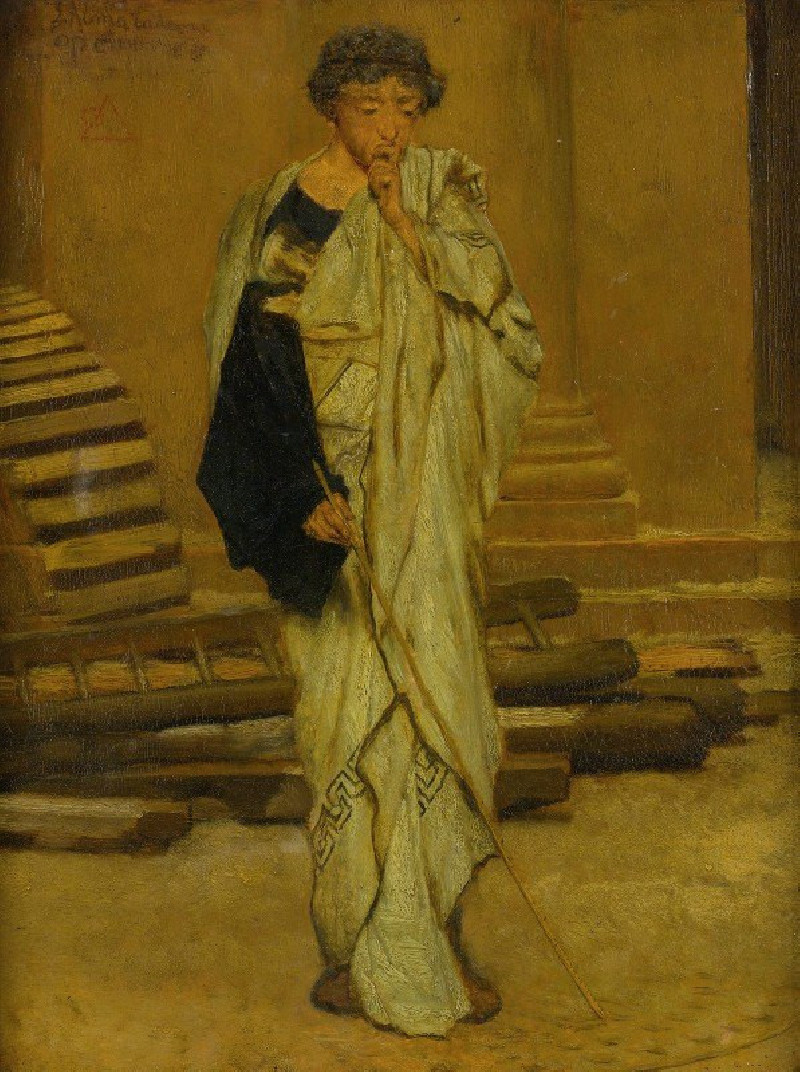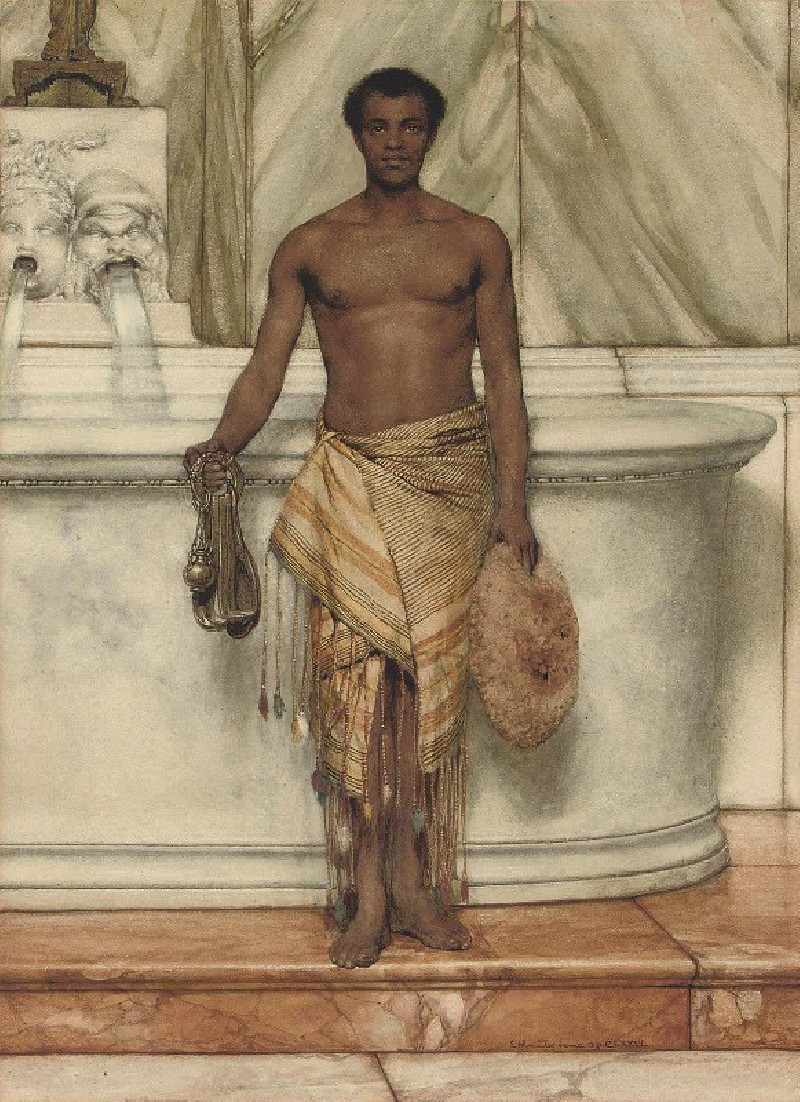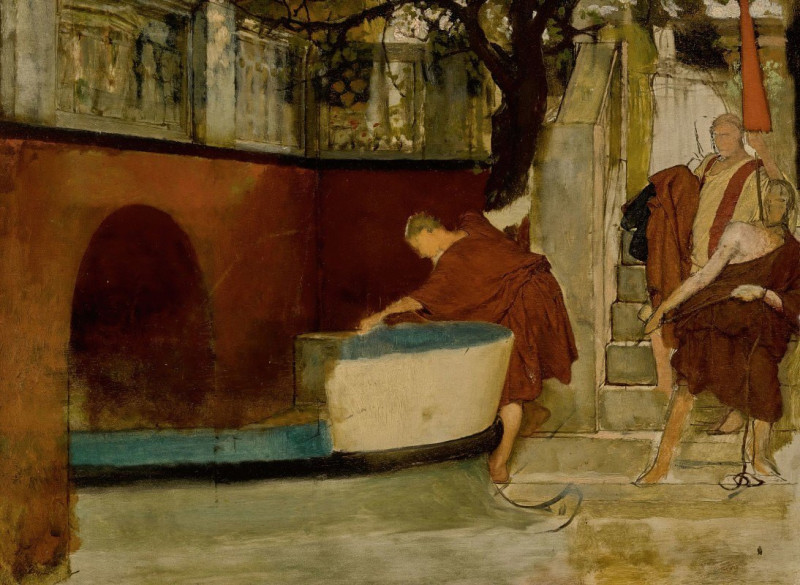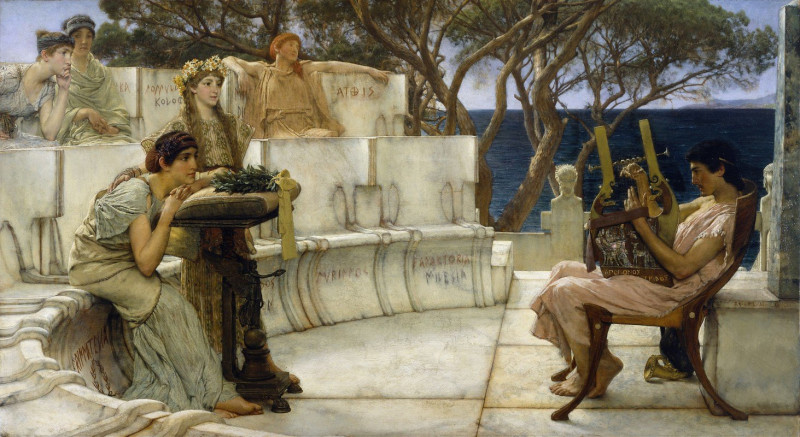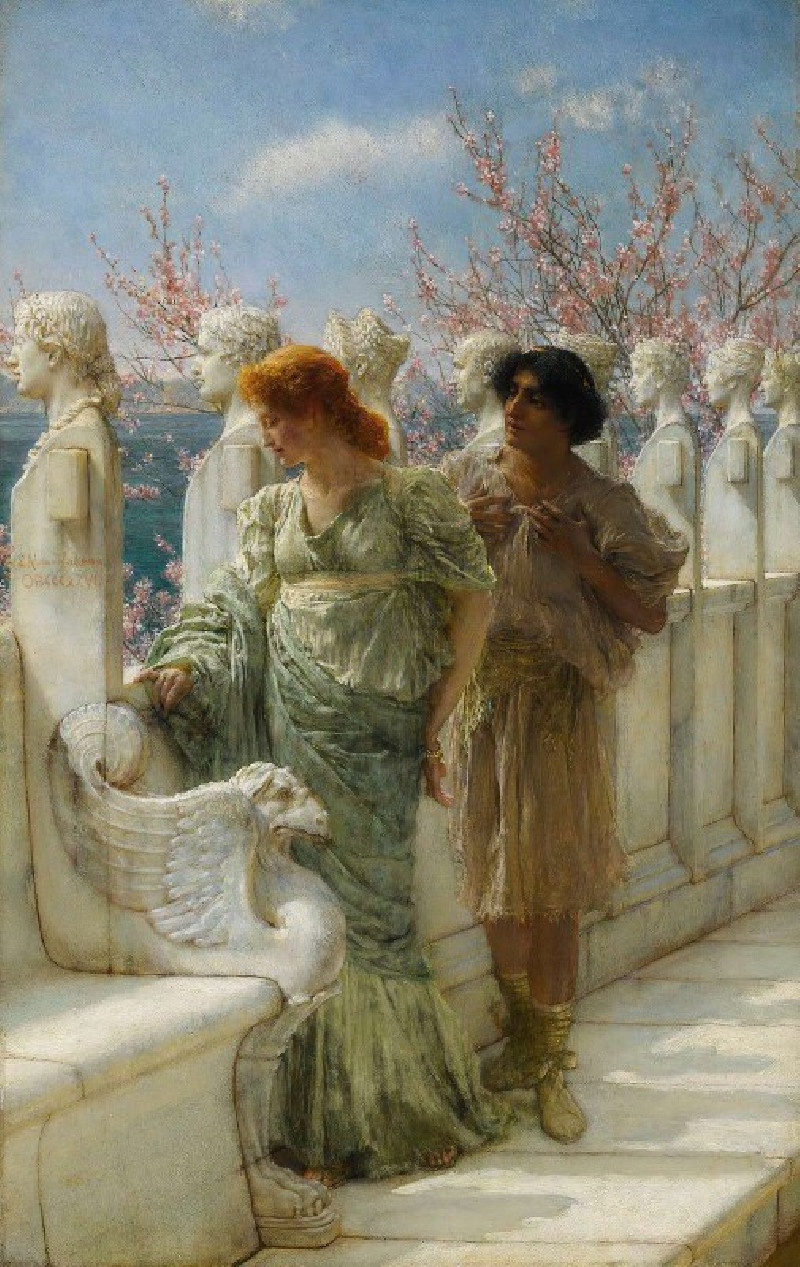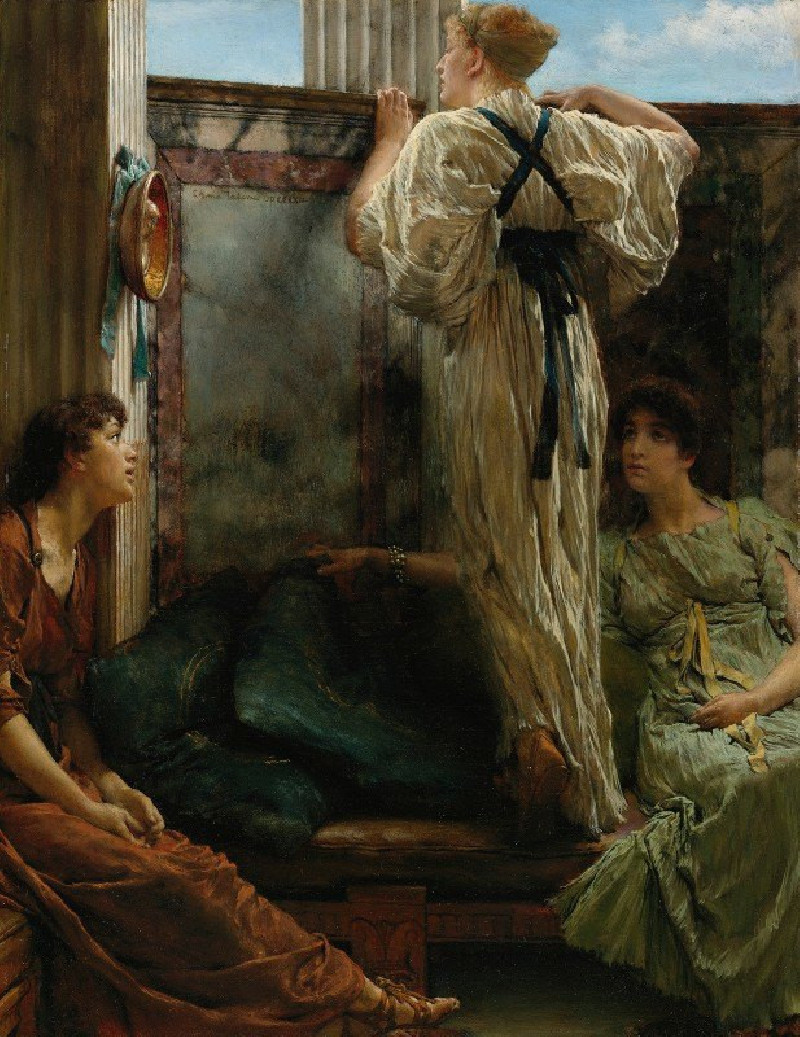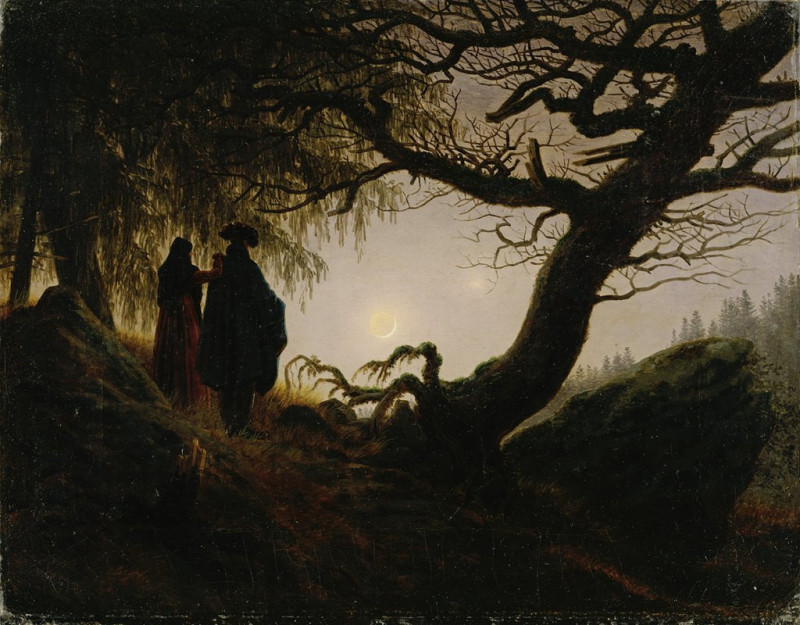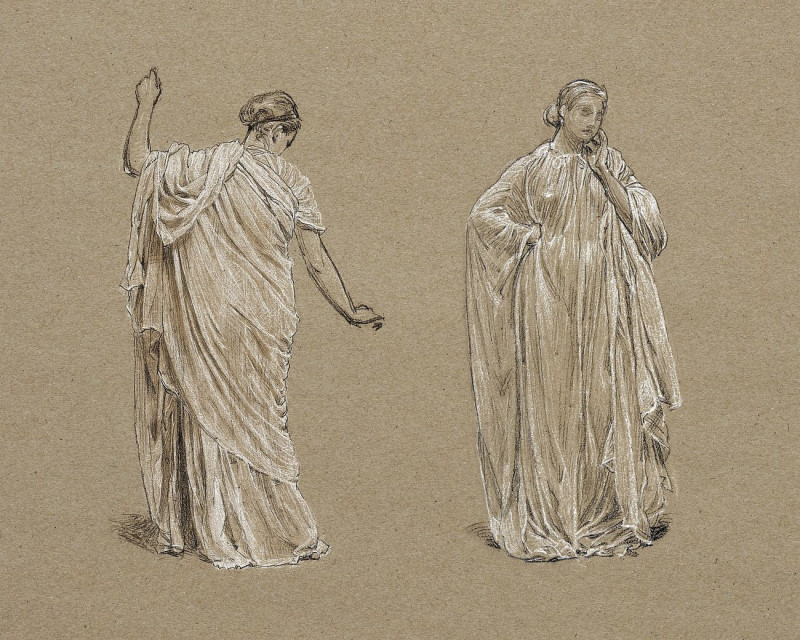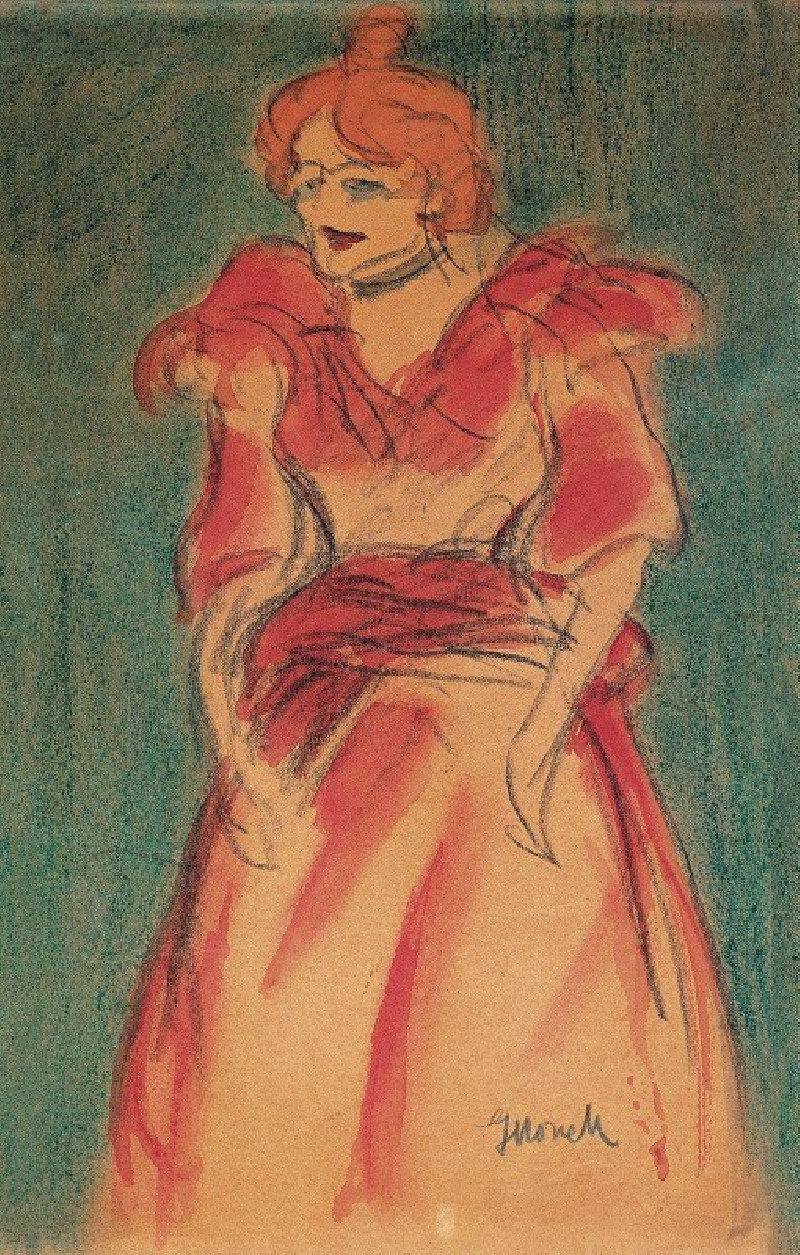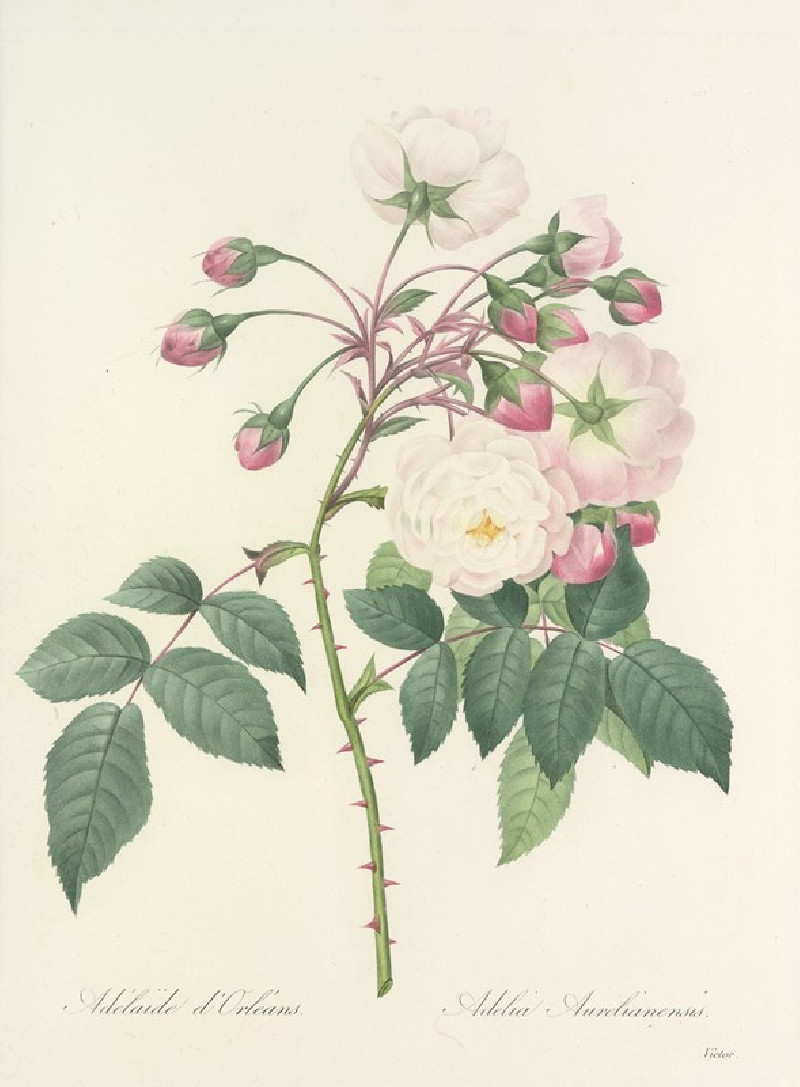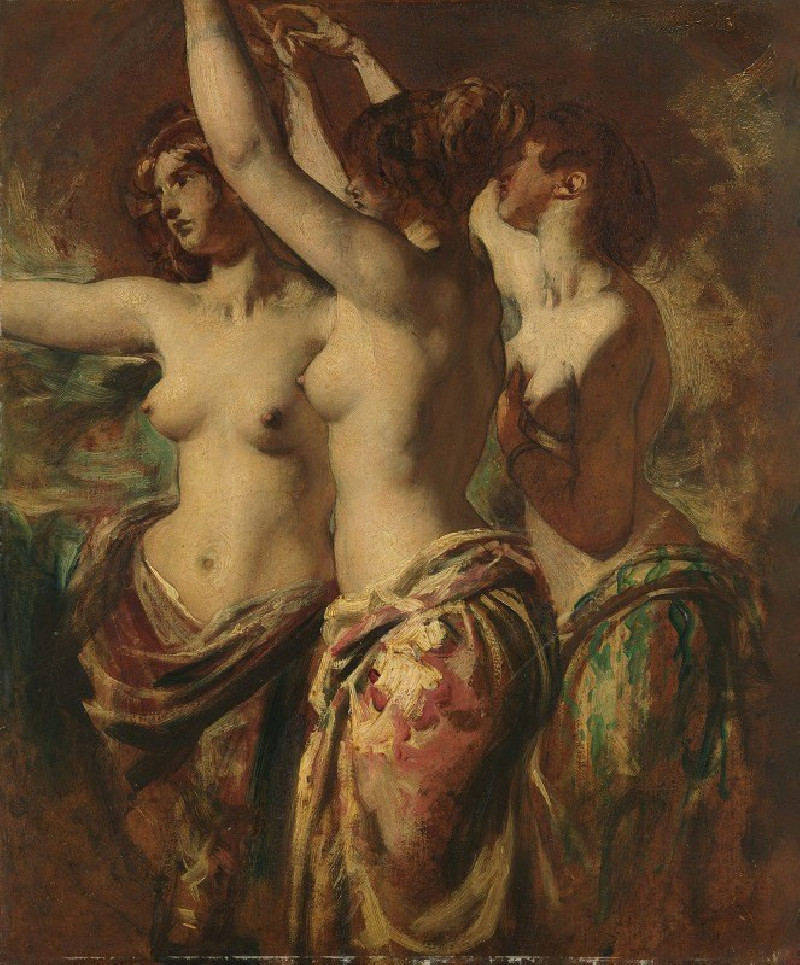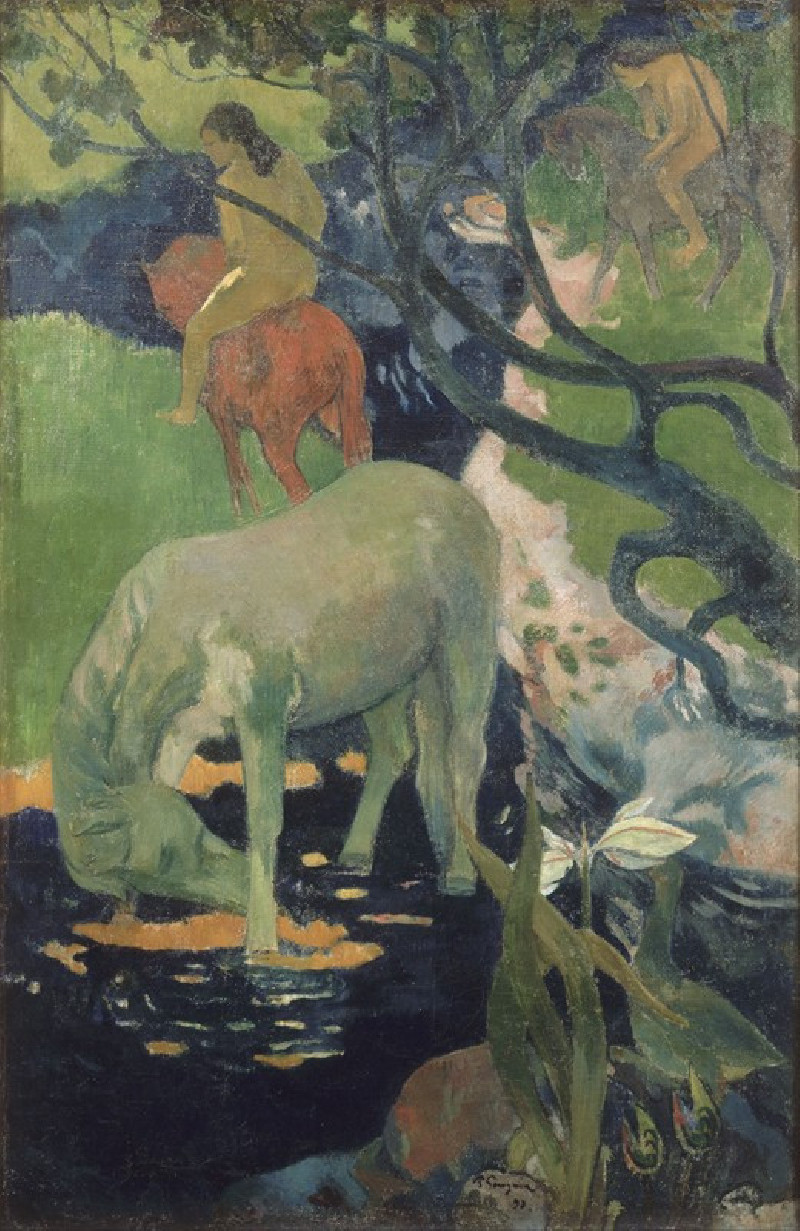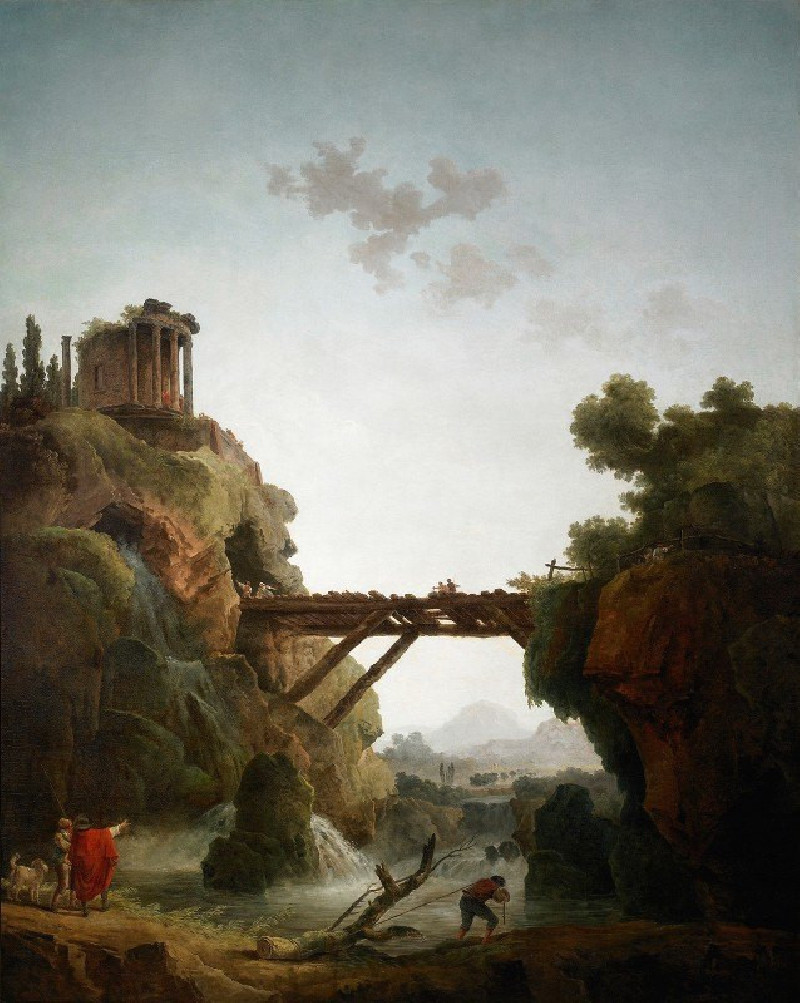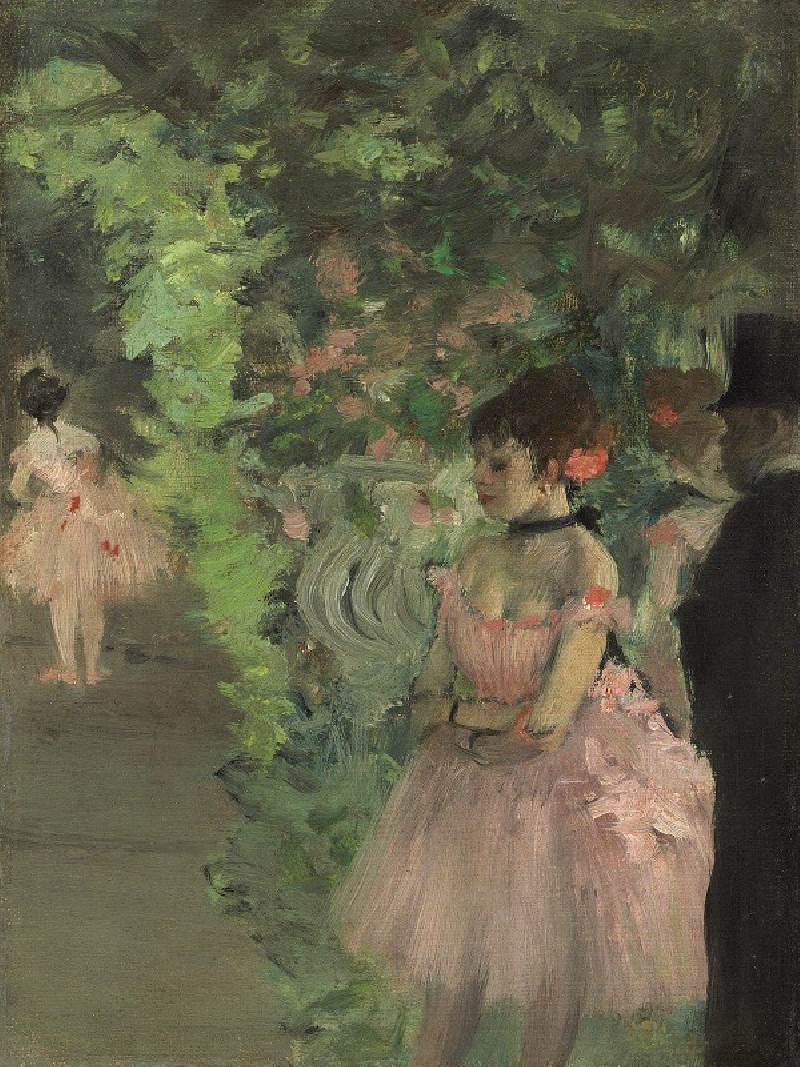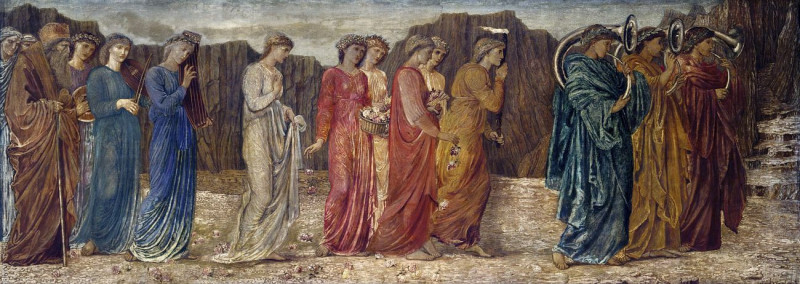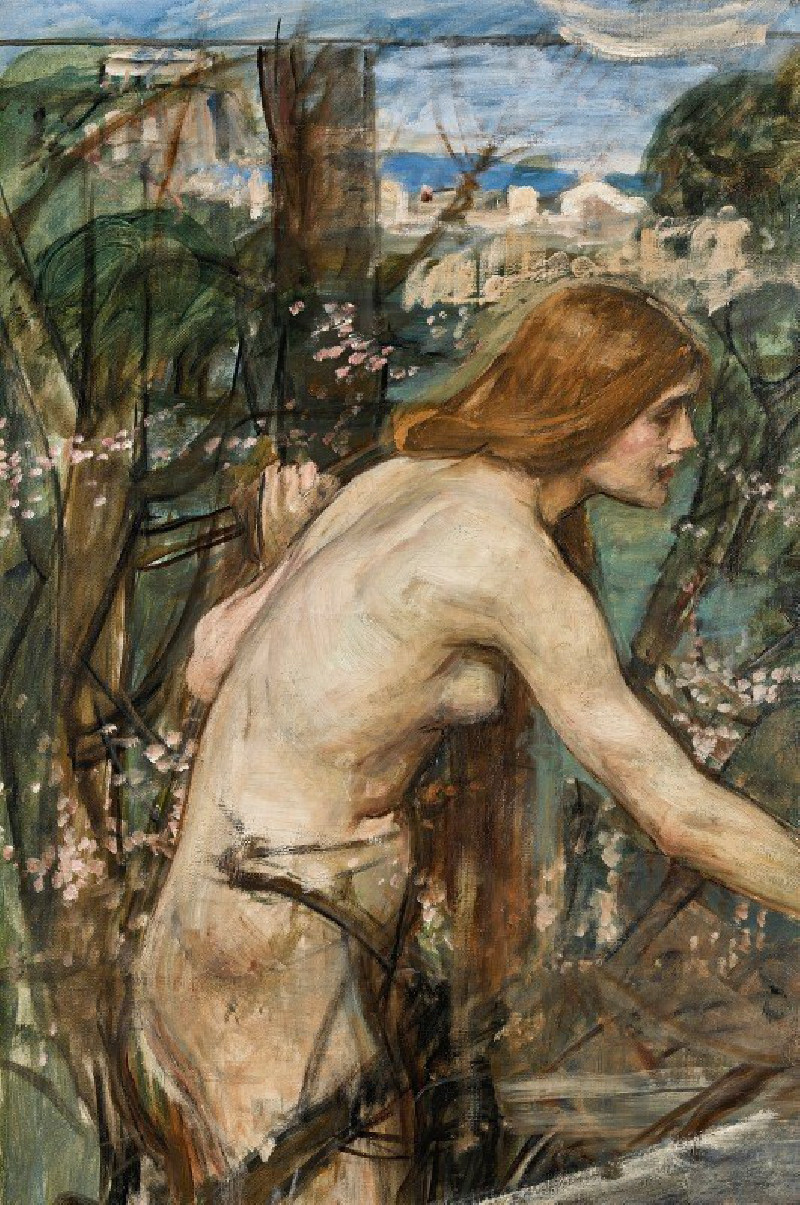Glaucus and Nydia (1867)
Technique: Giclée quality print
Recommended by our customers
More about this artwork
Lawrence Alma-Tadema's enchanting painting titled "Glaucus and Nydia" from 1867 is a captivating representation of classical romance and tragedy, inspired by characters from Edward Bulwer-Lytton's novel "The Last Days of Pompeii." Here, Alma-Tadema masterfully depicts the blind flower girl, Nydia, sitting at the edge of a luxuriously adorned Roman couch. Dressed in a flowing violet robe, her head crowned with a dark, richly detailed band, Nydia is engrossed in arranging a basket of pink roses, her face marked by an expression of thoughtful concentration.Beside her, Glaucus, the Greek nobleman, lies in a relaxed pose on the same couch, his figure draped in a white toga accentuated with intricate, classical motifs. His head resting on a richly embroidered pillow, Glaucus seems utterly lost in a tranquil sleep, possibly indicating his obliviousness to Nydia's devoted presence. The setting around them dazzles with luxurious decor; from the elegant floral patterns on the couch and the nearby tapestry, to the garden glimpsed through an open doorway and the ivory statue of a female figure, all contributing to the grandeur typical of an affluent Roman home.The precision with which Alma-Tadema captures the textures — from the silky flowers and the fabric of the garments, to the marble and foliage — enhances the scene’s tactile and visual realism.
Delivery
Returns
Sir Lawrence Alma-Tadema was a Dutch painter of special British denizenship. Born in Dronrijp, the Netherlands, and trained at the Royal Academy of Antwerp, Belgium, he settled in England in 1870 and spent the rest of his life there. A classical-subject painter, he became famous for his depictions of the luxury and decadence of the Roman Empire, with languorous figures set in fabulous marbled interiors or against a backdrop of dazzling blue Mediterranean Sea and sky. Alma-Tadema was considered one of the most popular Victorian painters.


